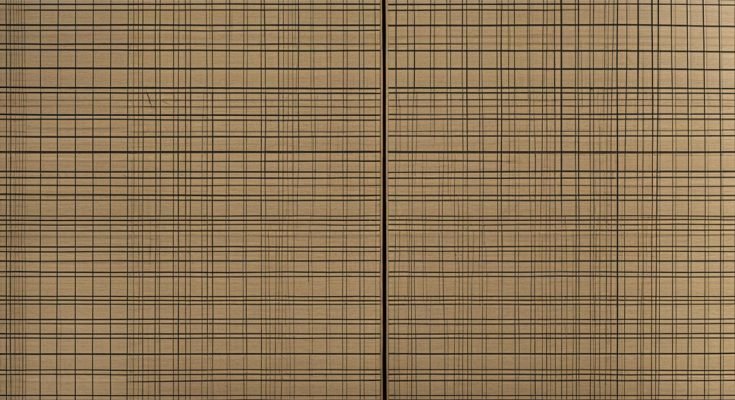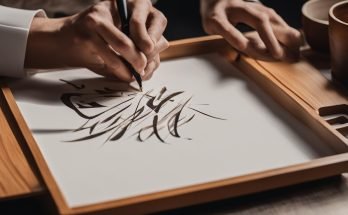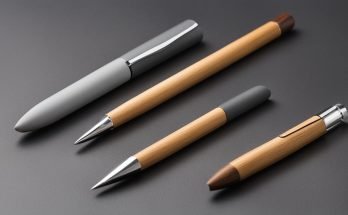Calligraphy Practice Boards: Master the Art of Perfect Strokes Instantly
Calligraphy practice boards are essential tools for improving your calligraphy skills. Whether you’re a beginner or an experienced calligrapher, these boards can help you perfect your strokes and enhance your overall lettering style. With the right practice boards, you can develop consistent and precise letterforms, refine your technique, and bring creativity to your fingertips.
Key Takeaways:
- Calligraphy practice boards are essential for improving your calligraphy skills.
- These boards help you perfect your strokes and enhance your overall lettering style.
- Using practice boards, you can develop consistent and precise letterforms.
- Practice boards allow you to refine your technique and bring creativity to your fingertips.
- Investing in the right practice boards can greatly enhance your calligraphy practice experience.
Getting Started with Calligraphy Practice
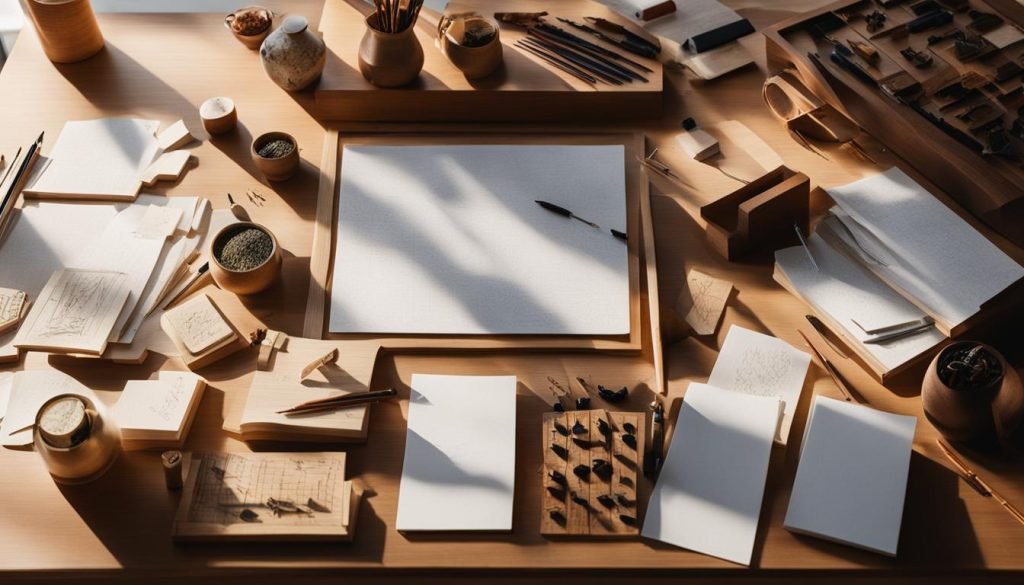
If you’re new to calligraphy, getting started can feel daunting. However, with the right tools and knowledge, anyone can learn this beautiful art form. Calligraphy practice boards provide a structured and guided approach to learning.
These boards offer beginners the opportunity to familiarize themselves with basic strokes, letterforms, and techniques. Designed to be user-friendly, they provide step-by-step instructions for beginners to develop their skills.
By practicing on calligraphy training boards, you can gain confidence in your strokes and improve your overall lettering style. These boards are the perfect tool to explore different beginner calligraphy supplies and find what works best for you.
“With the right practice boards, you can develop consistent and precise letterforms, refine your technique, and bring creativity to your fingertips.”
The Benefits of Calligraphy Practice Boards
- Structured and guided learning
- Step-by-step instructions for beginners
- Opportunity to familiarize with basic strokes and letterforms
- Improve stroke consistency and overall lettering style
With the assistance of calligraphy practice boards, you can progress at your own pace and develop a strong foundation in calligraphy. These boards are an essential tool for beginners looking to explore the world of calligraphy and unleash their creative potential.
| Beginner Calligraphy Supplies | Benefits |
|---|---|
| Calligraphy practice boards | Provides structured learning and step-by-step instructions |
| Oblique holder | Aids in maintaining the correct angle for smooth strokes |
| Suitable ink | Allows for better ink flow and control |
| Appropriate paper | Prevents feathering and bleeding |
Investing in beginner calligraphy supplies, including practice boards, will set you on the path to becoming a skilled calligrapher. With regular practice and the right tools, you’ll be able to create beautiful and expressive lettering.
The Importance of Proper Tools for Calligraphy Practice
When it comes to calligraphy practice, having the right tools is crucial for achieving optimal results. The tools you use can greatly impact your writing experience and the quality of your lettering. Here are some essential calligraphy tools that every beginner should have in their arsenal:
Pens and Holders:
In calligraphy, using the right pen and holder is key. An oblique pen holder is recommended for creating slanted lines and maintaining the correct angle while writing. It helps you achieve smoother and more consistent strokes, allowing for better control and precision. Pair your oblique holder with pointed nibs suitable for calligraphy, depending on the style and script you’re practicing.
Ink:
The type of ink you choose can significantly impact the final look of your calligraphy. High-quality ink with good flow properties is essential for achieving consistent lines and avoiding issues like feathering or bleeding. Experiment with different types of ink, such as water-based or pigment-based, to find the one that suits your preferences and provides the best results.
Paper:
Choosing the right paper is equally important for calligraphy practice. Opt for smooth and heavyweight paper that can handle ink without feathering or bleeding. Look for calligraphy practice pads or sheets specifically designed for fountain pens or calligraphy ink. These papers have guidelines that enable you to practice your letterforms accurately and maintain consistent spacing.
Investing in the proper calligraphy tools will not only enhance your practice sessions but also contribute to the overall quality of your calligraphy. With the right tools in hand, you’ll be able to focus on honing your technique and achieving beautiful lettering.
Choosing the Right Calligraphy Practice Sheets
Calligraphy practice sheets are essential for honing your calligraphy skills and improving your lettering technique. They provide structured guidelines and templates that allow you to practice various letterforms and strokes, helping you develop consistency and precision in your writing. Whether you’re a beginner or an experienced calligrapher, using practice sheets is a valuable tool in your journey to mastering the art of calligraphy.
When choosing calligraphy practice sheets, it’s important to consider your learning goals and the style of calligraphy you want to focus on. Practice sheets are available in both lowercase and uppercase formats, allowing you to practice specific letterforms or entire words and sentences. They cater to various calligraphy styles, including modern, traditional, and decorative scripts, so you can find the right sheets that align with your interests and aspirations.
Furthermore, calligraphy practice sheets offer a gradual progression from basic strokes to more complex letterforms. They provide step-by-step instructions and visual references that guide you in forming each stroke with precision. By following the guidelines on the practice sheets and practicing regularly, you can strengthen your muscle memory, improve hand-eye coordination, and develop a natural flow in your writing style.
Benefits of Using Calligraphy Practice Sheets:
- Structured learning approach with guided instructions
- Opportunity to practice various letterforms and strokes
- Improvement in consistency, precision, and lettering style
- Development of muscle memory and hand-eye coordination
- Gradual progression from basic strokes to more complex letterforms
- Catering to different calligraphy styles and preferences
Overall, incorporating calligraphy practice sheets into your learning routine is an effective way to enhance your calligraphy skills and improve your lettering technique. They provide the guidance and structure needed for consistent practice, allowing you to progress and achieve your calligraphy goals. So, whether you’re a beginner seeking to learn the basics or an experienced calligrapher looking to refine your style, calligraphy practice sheets are essential tools in your calligraphy learning essentials.
Mastering Basic Strokes and Letter Formation
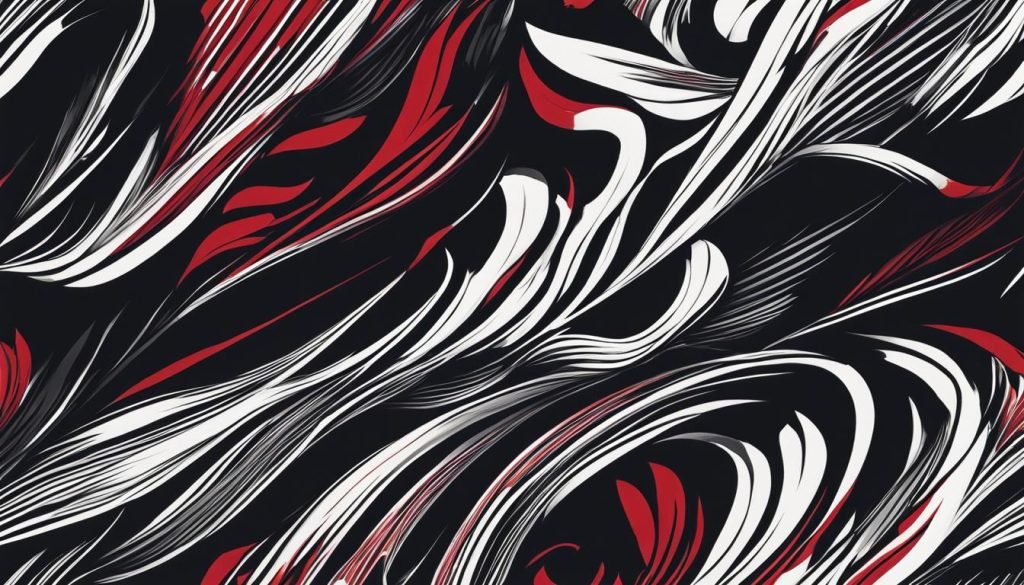
When it comes to calligraphy, mastering basic strokes is the key to creating beautiful letterforms. Understanding the proper execution of upstrokes and downstrokes is essential for achieving balanced and consistent lettering. With the help of calligraphy practice boards, you can refine your stroke consistency and learn the proper formation of each letter.
Calligraphy practice boards offer specific exercises that guide you through various strokes and letterforms. These exercises allow you to focus on improving your technique, ensuring that each stroke is executed with precision. By following the step-by-step instructions provided on the practice boards, you can develop a solid foundation and enhance your overall calligraphy skills.
One of the advantages of using calligraphy practice boards is the opportunity to learn letter formation in a structured manner. Each stroke and letter is broken down into manageable steps, making it easier for beginners to grasp the fundamentals. With regular practice using these boards, you’ll gradually build muscle memory and develop a natural flow in your lettering.
Remember, mastering basic strokes and letter formation takes time and dedication. By incorporating calligraphy practice boards into your learning routine, you’ll be able to refine your technique and create stunning calligraphy pieces that showcase your unique style and creativity.
Table: Calligraphy Stroke Variations
| Stroke Variation | Description |
|---|---|
| Upstroke | A line that moves upwards, creating thin and light strokes. |
| Downstroke | A line that moves downwards, creating thick and heavy strokes. |
| Underturn | A curved stroke that starts thin and gradually becomes thicker. |
| Overtun | A curved stroke that starts thick and gradually becomes thinner. |
| Ascending Loop | A loop that moves upwards, often found in letters like ‘h’ and ‘l’. |
| Descending Loop | A loop that moves downwards, often found in letters like ‘g’ and ‘j’. |
By practicing these stroke variations and letter formations, you’ll gain greater control over your calligraphy and be able to create stunning pieces of art.
Troubleshooting Common Calligraphy Issues
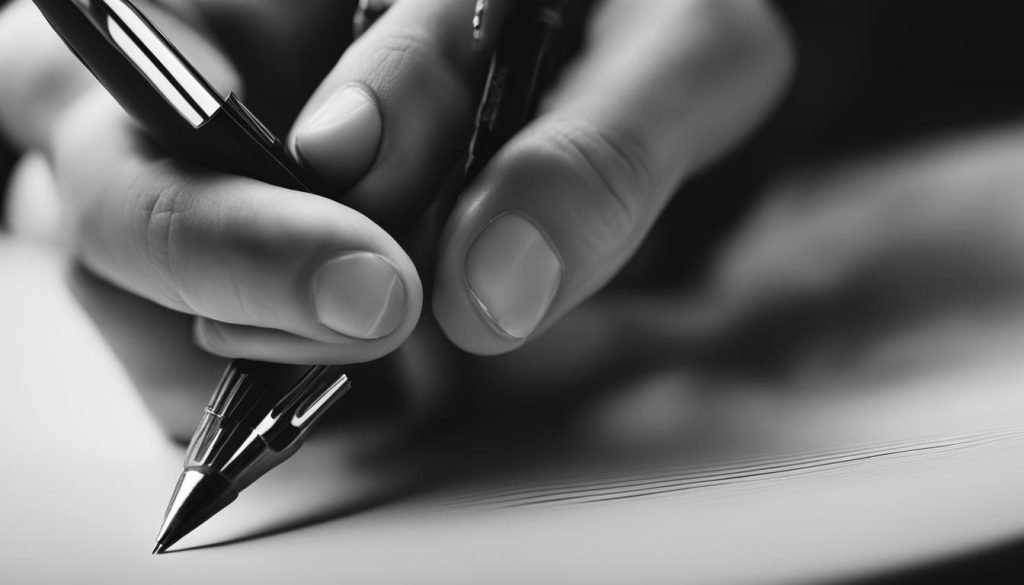
Calligraphy practice boards not only help you improve your skills but also assist in troubleshooting common issues. It’s common for calligraphers to face challenges such as railroading, inconsistent ink flow, and uneven letterforms. Fortunately, practice boards provide guidance on how to address these issues, offering valuable tips and tricks to overcome them.
One of the common problems calligraphers encounter is railroading, where the ink splits into two parallel lines instead of flowing smoothly. To tackle this issue, make sure your pen nib is clean and free from any residue. You can also try adjusting the ink consistency or the angle at which you hold your pen. Practice boards often include exercises and techniques specifically designed to help you avoid railroading and achieve a consistent flow of ink.
“Ink flow issues can be frustrating, but with the right techniques and practice, you can overcome them,” says renowned calligrapher, Sarah Johnson. “Don’t be afraid to experiment and find what works best for you. Practice boards are an excellent tool to help troubleshoot and refine your technique.”
Inconsistent ink flow can also be addressed by checking the ink’s consistency and ensuring it’s not too thin or too thick. The type of paper you use can also impact ink flow. Practice boards often recommend suitable ink and paper combinations to optimize your calligraphy experience.
Another common problem is achieving even and balanced letterforms. Practice boards offer exercises that focus on stroke consistency and proper letter formation. By following the instructions and practicing regularly, you can develop a steady hand and create more uniform lettering.
| Common Calligraphy Issues | Troubleshooting Tips |
|---|---|
| Railroading (ink splits into parallel lines) | – Clean pen nib and adjust ink consistency – Experiment with pen angle |
| Inconsistent ink flow | – Check ink consistency – Use suitable ink and paper combinations |
| Uneven letterforms | – Focus on stroke consistency – Practice proper letter formation |
Advancing Your Calligraphy Practice

Once you have mastered the basics of calligraphy, it’s time to take your skills to the next level. Advancing your calligraphy practice involves exploring more advanced techniques and striving for calligraphy mastery. By incorporating these techniques into your practice sessions, you can elevate your style and create truly remarkable pieces of art.
One advanced calligraphy technique to explore is flourishing. This decorative element involves adding elegant and intricate embellishments to your letterforms, enhancing the overall aesthetic of your calligraphy. Practice boards often offer exercises specifically designed to help you develop your flourishing skills, allowing you to create beautifully embellished scripts.
In addition to flourishing, you can also experiment with variations in line weight. This technique involves adding contrast to your lettering by creating both thick and thin strokes. By practicing different pressure levels and adjusting the angle of your pen, you can achieve stunning effects that add depth and dimension to your calligraphy.
Finally, advanced calligraphy practice may involve mastering more intricate letterforms, such as Spencerian or Copperplate scripts. These styles require precision, control, and a deep understanding of the fundamental principles of calligraphy. Practice boards offer dedicated exercises for these scripts, allowing you to refine your technique and achieve mastery in the art of calligraphy.
Table: Advanced Calligraphy Techniques
| Technique | Description |
|---|---|
| Flourishing | Adds decorative embellishments to letterforms, enhancing aesthetics. |
| Variations in Line Weight | Creates contrast by incorporating both thick and thin strokes. |
| Intricate Letterforms | Mastering complex scripts like Spencerian and Copperplate. |
Calligraphy Practice on Different Surfaces
Calligraphy practice boards are versatile tools that can be used on various surfaces, allowing you to explore creative calligraphy projects beyond traditional paper. Experimenting with different surfaces not only enhances your skills but also opens up a world of possibilities for personalized pieces of art. From wood to glass, fabric to ceramics, each surface presents its own unique challenges and opportunities.
Wood
Calligraphy on wood offers a rustic and organic feel to your lettering. The texture and grain of the wood can add depth and character to your calligraphic designs. You can create beautiful wooden signs, personalized plaques, or even carve intricate letterforms for a truly bespoke piece. Remember to choose a suitable wood surface that is smooth and free of splinters to ensure optimal writing experience.
Glass
Writing calligraphy on glass can result in elegant and delicate designs. Use a glass pen or a waterproof marker to create stunning lettering on glass surfaces such as mirrors, windows, or glassware. Personalize your wedding invitations with beautifully written names, or create thoughtful gifts by writing motivational quotes on glass frames. The transparency of glass adds a touch of sophistication to your calligraphy.
Fabric
Calligraphy on fabric allows you to combine the art of lettering with textiles, resulting in unique and personalized items. Whether it’s hand-lettered t-shirts, tote bags, or embroidered wall hangings, calligraphy on fabric adds a touch of craftsmanship to your creations. Choose fabric with a tight weave, such as cotton or linen, and use fabric markers or fabric paint to ensure long-lasting and vibrant designs.
Ceramics
Writing calligraphy on ceramics allows you to transform everyday objects into works of art. Personalize mugs, plates, or bowls with beautifully written names or meaningful quotes. You can use ceramic pens or paints that can withstand high temperatures when fired in a kiln, ensuring that your calligraphy remains intact even after multiple uses and washes. The smooth and glossy surface of ceramics provides a perfect canvas for your lettering.
| Surface | Features | Ideal Projects |
|---|---|---|
| Wood | Rustic, organic feel | Wooden signs, personalized plaques |
| Glass | Elegant, delicate designs | Mirrors, windows, glassware |
| Fabric | Combines lettering with textiles | T-shirts, tote bags, wall hangings |
| Ceramics | Transforms everyday objects | Mugs, plates, bowls |
When practicing calligraphy on different surfaces, it’s important to consider the specific materials and tools required. Always use appropriate pens, paints, or markers suitable for the chosen surface to ensure the best results. Additionally, take into account any necessary surface preparation, such as priming or sealing, to create optimal conditions for your calligraphy. With creativity and practice, calligraphy on different surfaces can elevate your artistic expression and bring your lettering to life.
Conclusion
Calligraphy practice boards are an essential tool for both beginner and experienced calligraphers. Incorporating these boards into your routine offers numerous benefits that can help you perfect your strokes and enhance your calligraphy skills.
One of the key advantages of using calligraphy practice boards is the structured and guided approach they provide. These boards offer step-by-step instructions and exercises that allow you to develop your skills at your own pace. Whether you’re just starting or looking to advance your calligraphy, these boards can help you refine your technique and achieve consistent and precise letterforms.
By regularly practicing with calligraphy practice boards, you can troubleshoot common issues and overcome challenges such as inconsistent ink flow or uneven letterforms. These boards provide helpful tips and tricks to address these problems, allowing you to continually improve your calligraphy and create stunning scripts.
Ultimately, calligraphy practice boards are a valuable investment for any calligrapher. With dedication and regular practice, you can reap the benefits of these boards and take your calligraphy skills to new levels. So, pick up your practice board, grab your favorite pen, and embark on a journey of creativity and mastery with calligraphy practice boards.
FAQ
Are calligraphy practice boards suitable for beginners?
Yes, calligraphy practice boards are ideal for beginners as they offer a structured and guided approach to learning. They provide step-by-step instructions and templates for practicing basic strokes and letterforms.
What tools do I need for effective calligraphy practice?
For optimal results, you will need a good quality oblique holder, suitable ink, and appropriate paper. The oblique holder helps maintain the correct writing angle, high-quality ink allows for better ink flow and control, and the right paper prevents feathering and bleeding.
How can calligraphy practice sheets help improve my skills?
Calligraphy practice sheets provide templates and guidelines for practicing various letterforms. They allow you to focus on improving your technique and are available in both lowercase and uppercase formats. These sheets are an essential part of your calligraphy learning essentials.
Why is mastering basic strokes important in calligraphy?
Basic strokes are the foundation of letterforms in calligraphy. Understanding their proper execution is crucial for developing consistent and beautiful lettering. Calligraphy practice boards offer specific exercises to help improve stroke consistency and learn proper letter formation.
How can calligraphy practice boards help troubleshoot common issues?
Calligraphy practice boards provide guidance on addressing common issues such as railroading, inconsistent ink flow, and uneven letterforms. They offer tips and tricks to overcome these challenges, allowing you to continually improve your calligraphy.
Can calligraphy practice boards help me advance my skills?
Yes, calligraphy practice boards offer exercises that challenge your abilities and help you expand your skills. They provide opportunities to practice flourishing, variations in line weight, and more intricate letterforms. With regular practice and the use of practice boards, you can advance your calligraphy and elevate your style.
Can I use calligraphy practice boards on different surfaces?
Yes, calligraphy practice boards are versatile tools and can be used on various surfaces. While traditional paper is commonly used, they can also be utilized on materials such as wood, glass, fabric, or ceramics. This allows for creative possibilities and personalized pieces of art.

